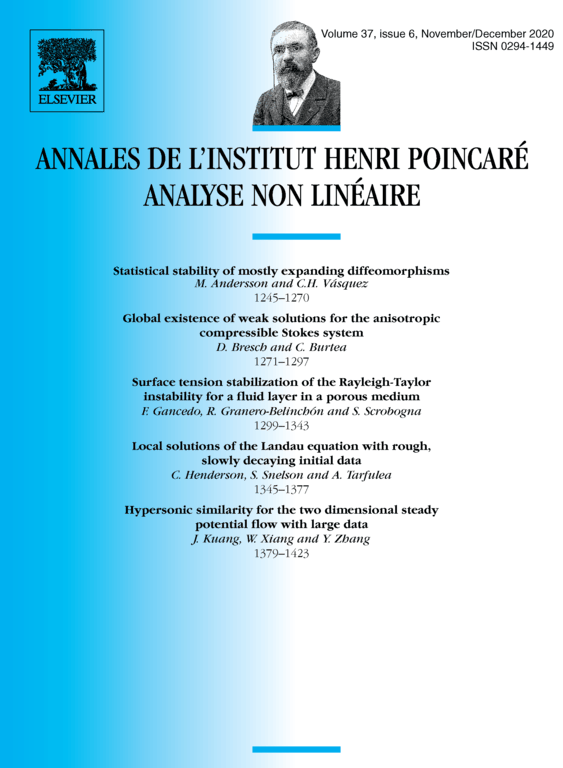Hypersonic similarity for the two dimensional steady potential flow with large data
Jie Kuang
Wuhan Institute of Physics and Mathematics, Chinese Academy of Sciences, Wuhan 430071, China; Innovation Academy for Precision Measurement Science and Technology, Chinese Academy of Sciences, Wuhan 430071, ChinaWei Xiang
Department of Mathematics, City University of Hong Kong, Kowloon, Hong Kong, ChinaYongqian Zhang
School of Mathematical Sciences, Fudan University, Shanghai 200433, China

Abstract
In this paper, we establish the first rigorous mathematical result on the validation of the hypersonic similarity globally, which is also called the Mach-number independence principle, for the two dimensional steady potential flow. The hypersonic similarity is equivalent to the Van Dyke's similarity theory, that is, if the hypersonic similarity parameter K is fixed, the shock solution structures (after scaling) are consistent, when the Mach number of the flow is sufficiently large. One of the difficulty is that after scaling, the solutions are usually of large data since the perturbation of the hypersonic flow is usually not small related to the sonic speed. In order to make it, we first develop a modified Glimm scheme to construct the approximate solutions with large data and find fine structure of the elementary wave curves to obtain the global existence of entropy solutions with large data, for fixed K and sufficiently large Mach number of the incoming flow . Finally, we further show that for a fixed hypersonic similarity parameter K, if the Mach number , the solutions obtained above approach to the solution of the corresponding initial-boundary value problem of the hypersonic small-disturbance equations. Therefore, the Van Dyke's similarity theory is verified rigorously for the first time.
Cite this article
Jie Kuang, Wei Xiang, Yongqian Zhang, Hypersonic similarity for the two dimensional steady potential flow with large data. Ann. Inst. H. Poincaré Anal. Non Linéaire 37 (2020), no. 6, pp. 1379–1423
DOI 10.1016/J.ANIHPC.2020.05.002